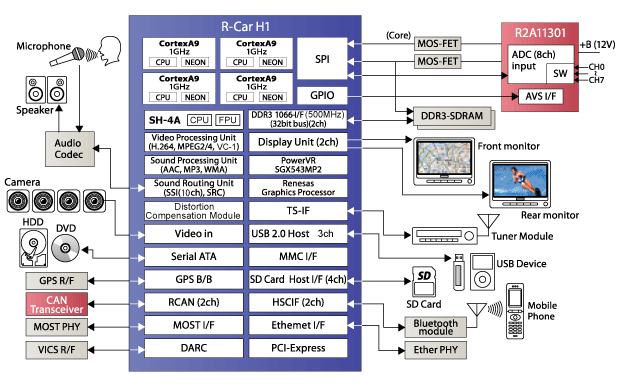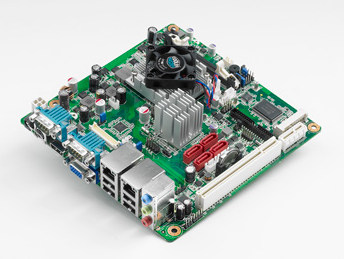The Linux foundation announced Yocto Project Release 1.1 today. This release codenamed “Edison” and based on Poky 6.0 is the the second release of the project, one year after it was announced in October 2010 to provide developers with greater consistency in the software and tools they’re using across multiple architectures for embedded Linux development. The Yocto Project reached the following milestones during the last year: Alignment of OpenEmbedded technology and the inclusion of OpenEmbedded representation in the Yocto Project governance structure. The projects share a common core that consists of software build recipes and core Linux components that prevent fragmentation and reinforce the OpenEmbedded methodology as an open standard for embedded Linux build systems. Contribution of tools and technologies such as Cross-prelink, EGLIBC, Pseudo, Shoeleather Lab (for automated testing) and Swabber have been contributed from Intel, Mentor Graphics, MontaVista Software and Wind River. Commercial adoption with examples such as […]
Linux 3.1 Release
Linux Torvalds announced the release of Linux Kernel 3.1 yesterday: As promised, the kernel summit has started, and Linux-3.1 is out. The (small) shortlog of changes since -rc10 are appended, we have mostly some sparc and networking changes, along with some radeon and intel iommu fixes (mostly for largepages and integrated graphics issues). Most people probably will not notice the changes. One big change from -rc10 is that there are tar-balls and patches, so if you aren’t a git user (why?) you can download it now in a traditional format. On of the things to note is that the files are now signed by my gpg key, and it’s the *uncompressed* version that the signature is for. And of course, this means that the merge window for 3.2 is open. I’ll do some merging during the KS, but probably most when I get back home – but you can still […]
Renesas R-Car H1 Automotive SoC
Renesas announced the R-Car H1, their new automotice SoC with 4 Cortex-A9 cores clocked at 1GHz and Imagination Technologies’ SGX-543-MP2 graphics processing unit (GPU) aimed at high-end navigation systems. It also features a Renesas SH-4A high-reliability real-time processing CPU core acting as a multimedia engine (MME) . The R-Car H1 SoC can also powered with Renesas’ IMP-X3 core (optional), a real-time image processing unit that enables developers to implement augmented reality application such as 360-degree camera views (Thanks to up to four independent input camera channels) and sign recognition. Here’s an excerpt of the press release: Renesas Electronics Corporation (TSE: 6723) and its subsidiary, Renesas Mobile Corporation, today announced a new member of the R-Car series of automotive systems-on-chip (SoCs), the R-Car H1, capable of delivering up to 11,650 Dhrystone MIPS (DMIPS), and ideal for the high-end car navigation market. The R-Car H1 SoC offers an innovative architecture where the application […]
AMD G-Series Based Mini-ITX: Advantech AIMB223
Advantech announced a mini-ITX board – AIMB223 – featuring AMD G-Series processors: T56N (dual core @ 1.65 GHz)), T40E (dual core @ 1GHz) and T44R (single core @ 1.2 GHz). The AIMB-223 board comes with up to 4GB of DDR3 SDRAM, PCI and PCI Express expansion, four SATA III interfaces, gigabit Ethernet, USB 2.0 and more. That’s yet another mini-ITX board based on AMD G-Series such has the iBase MI958 or the Fujitsu D3003-0x. The relative proliferation of mini-ITX board based on AMD embedded processors is probably due to the fact that AMD provides a Mini-ITX Reference Design. Here are the specifications of the board: Processor: AMD G-Series T56N (1.65GHz – dual-core – 18W TDP) or AMD G-Series T40E (1GHz – dual core – 6W TDP) or AMD G-Series T44R (1.2GHz – single core – 9W TDP) Chipset: AMD A55E Memory: up to 4GB of DDR3 SDRAM Expansion Slots: 1 […]
ARM big.LITTLE Processing Demo
ARM uploaded a big.LITTLE demonstration by Nandan Nayampally, Director, Product Marketing. The demo runs the Android 2.3 (Gingerbread) with graphs showing CPU usage and when Cortex A7 / A15 is running. At the beginning Cortex A7 handles the background tasks, and when they start the Android Browser, Cortex A15 is used instead to render the page and once this is done, the system switches back to Cortex A7. Scrolling the webpage will increase CPU usage, but this will still be handled by Cortex A7. They did not have to do any modifications to Android, but they just added a big.LITTLE aware Power Management Driver which will be open sourced and integrated in future version of the linaro kernel.
Android 4.0 Source Code To Be Released When Galaxy Nexus Ships
Google never opened Android 3.0 (Honeycomb) source code. It was probably because this OS was only meant to be used with tablets and they feared people would try to use it on smartphone. The good news is that Android 4.0 (ICS) source code will be made available once the Galaxy Nexus ships. Although I’m not sure what license will be used with Android 4.0, that follows exactly the GPL license requirements since you don’t need to release the source code if you don’t provide the binaries. See Jean-Baptiste Queru (Android Open Source Project ) announcement at https://plus.google.com/112218872649456413744/posts/HB5qQHeNKBQ. In the meantime, the GPL source files that match the Android 4.0 / r14 SDK have been made available: Kernel: https://dl.google.com/dl/android/gpl/android-gpl-kernel-sdk-4.0.1_r1.tgz Platform: https://dl.google.com/dl/android/gpl/android-gpl-platform-sdk-arm-4.0.1_r1.tgz Dev Tools: https://dl.google.com/dl/android/gpl/android-gpl-tools_r14.tgz Extra: https://dl.google.com/dl/android/gpl/android-extra-4.0.1-r14.tgz Like the Android did for all Honeycomb release, this is NOT the full source tree for Android 4.0 (ICS), these are only the GPL parts […]
Leveraging Android’s Linux Heritage at Android Open 2011
The first Android Open Conference took place about 10 days ago. Karim Yaghmour of OperSys published the presentation slides he used during his Android presentations. See Leveraging Android’s Linux Heritage presentation slides below which explain how to use existing Linux application in Android. Those 15 slides cover the following: Goal Rationale Stack Comparison Roadblocks Where do I start? Coexistence Approaches Unresolved / Uncharted Demo You can also check out the Embedded Android Workshop presentation.
Embedded Android Workshop at Android Open 2011
The first Android Open Conference took place about 10 days ago. Karim Yaghmour of OperSys published the presentation slides he used during his Android presentations. See Embedded Android Workshop presentation slides below. Those 159 slides cover the following: Android Basics Android History Android Ecosystem Legal Framework for Android Platform and Hardware requirements Development Tools Concepts and Internals: Android Concepts Framework Intro Native Development Overall Architecture System startup Linux Kernel Hardware Support Native User-Space Dalvik JNI System Server Calling on Services Activity Manager Binder Stock AOSP Apps Android Open Source Projects Tools and location Content Building Build system Adding new applications Images Using adb System Server Services run by System Server Observing the System Server Calling on system services Inside a few system services Creating your own system service Hardware Abstraction Layer Android Framework Location and components Android Customization Custom Toolchains and Dev Kits Rationale SDK generation NDK generation Creating a […]









